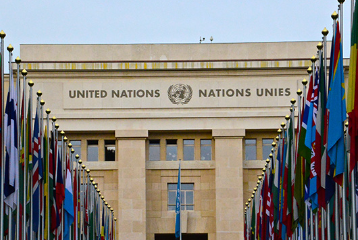Comments and Issues
Understanding the secessionist surge


 Business1 week ago
Business1 week agoNCC’s strategic overhaul: Revolutionizing Nigeria’s telecom industry

 Business7 days ago
Business7 days agoNCC trains journalists on telecom, ICT trends amid industry shifts

 Business1 week ago
Business1 week agoAdvertising industry pivotal to Nigeria’s economic progress–Information Minister

 Football1 week ago
Football1 week agoAdemola Lookman joins elite nominees for 2024 globe soccer awards

 Business6 days ago
Business6 days agoGoogle unveils robust anti-theft security suite for android phone users

 Sports2 days ago
Sports2 days agoVinicius Jr. discovers Cameroonian ancestry through DNA test

 Latest5 days ago
Latest5 days agoObasanjo warns of Nigeria’s leadership crisis, echoes hope at Chinua Achebe Forum

 Business6 days ago
Business6 days agoBanks that give hawkers money will be penalized — CBN issues fresh directives
















A rather capacious interpretation of the right to statehood, along with various political and economic forces, is now destabilizing many regions of the world. In just the past few weeks, the regional governments of Catalonia in Spain and Kurdistan in Iraq have held unofficial independence referendums. And in Cameroon, separatist groups in the English-speaking region of Ambazonia have unilaterally declared independence from the country’s French-speaking regions.
ALSO SEE: Biafra: IPOB members embarrass Buhari at UN General Assembly in US
Meanwhile, Scotland has been weighing whether to hold another independence referendum, so that it can remain in the European Union after the United Kingdom’s withdrawal from the bloc. And dozens of other regions with powerful secessionist forces – including Flanders in Belgium, Biafra in Nigeria, and Québec in Canada – are watching events closely from the sidelines.
National self-determination was a driving force of twentieth-century geopolitics, underpinning the creation of many new countries after the two world wars, and again after the collapse of the Soviet Union. When the United Nations was founded in 1945, it had just 51 member states; today, it has 193. But the road to independence is usually bloody, violent, and long, as Africa’s experience with civil war and ethnic conflict shows. The peaceful breakup of Czechoslovakia in 1993, and of Norway and Sweden in 1905, were the exceptions to the rule.